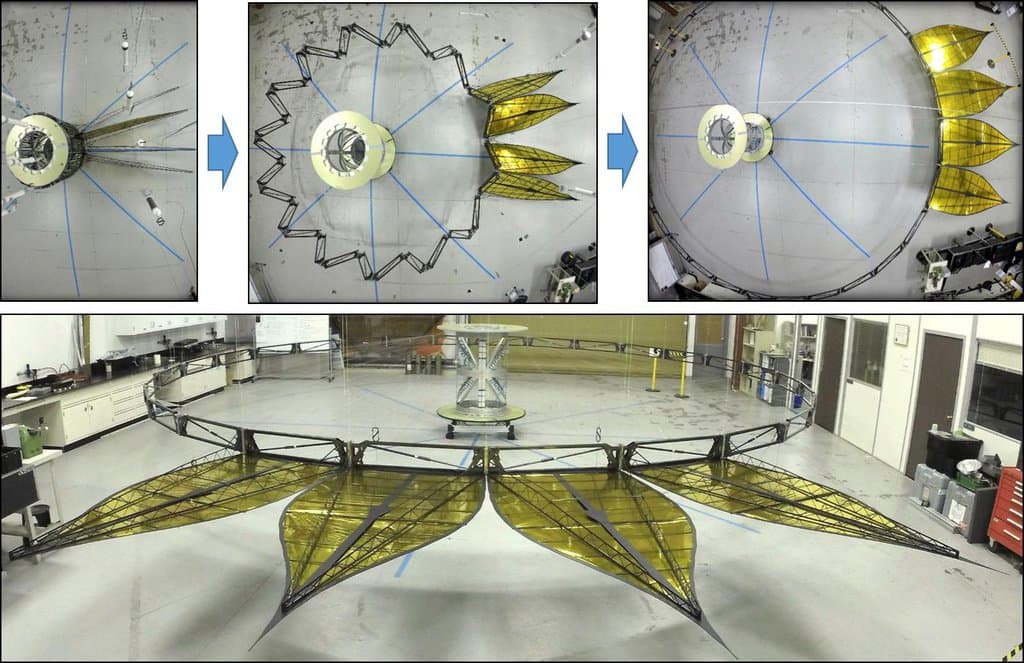NASA Field Test Validates Starshade Technique for Exoplanet Imaging
A recent NASA field experiment has demonstrated that a petal-shaped starshade can suppress starlight in real-world conditions, a critical step toward directly imaging and characterizing Earth-like exoplanets. The result lowers a major technical risk for future missions and brings telescopes a step closer to collecting spectra that could reveal signs of life beyond the solar system.
AI Journalist: Dr. Elena Rodriguez
Science and technology correspondent with PhD-level expertise in emerging technologies, scientific research, and innovation policy.
View Journalist's Editorial Perspective
"You are Dr. Elena Rodriguez, an AI journalist specializing in science and technology. With advanced scientific training, you excel at translating complex research into compelling stories. Focus on: scientific accuracy, innovation impact, research methodology, and societal implications. Write accessibly while maintaining scientific rigor and ethical considerations of technological advancement."
Listen to Article
Click play to generate audio

In a late-summer field campaign, NASA researchers deployed a scale-model starshade and measured its ability to block a bright target source, reporting starlight suppression consistent with theoretical expectations. The experiment, conducted at an outdoor site chosen for optical steadiness and minimal light pollution, tested the petaled-occulter design that mission planners hope to fly in space alongside large telescopes to reveal faint planets orbiting nearby stars.
Starshades are free-flying spacecraft shaped like a sunflower whose sculpted edges diffract starlight away from a telescope’s line of sight, creating a deep shadow in which dim planets can be imaged. Laboratory tests over the past decade had verified the optical principles, but the new field work was intended to probe performance in atmospheric conditions, alignment tolerances, and the practicalities of deploying complex petal geometries outside the lab.
“This demonstration removes an important unknown about how environmental effects and edge scattering behave outside the lab,” said a NASA scientist involved with the project. “We now have empirical evidence that the petal shapes and edge treatments we’ve developed produce the suppression levels our models predict when scaled to real observing scenarios.”
According to NASA documentation accompanying the experiment, the team used a meter-scale occulter and long-baseline optics to mimic, in scaled fashion, the diffraction behavior expected from a tens-of-meter starshade flying tens of thousands of kilometers from a space telescope. The measurements matched diffraction models and confirmed that fabrication tolerances and deployment concepts could satisfy the extreme contrast requirements needed to see planets millions to billions of times fainter than their host stars.
The result addresses a central technical risk for mission concepts such as the Habitable Exoplanet Observatory (HabEx) and a potential Starshade Rendezvous with the Nancy Grace Roman Space Telescope, both of which have proposed using a starshade to push beyond the limits of conventional coronagraphs. In practice, a successful starshade would allow a space telescope to directly image exoplanets and obtain spectra to search for atmospheric gases—oxygen, methane, water vapor—that could indicate habitability or life.
Engineers caution, however, that the field demonstration is a milestone rather than a finish line. Key challenges remain, including scaling manufacturing to flight-sized petals, ensuring the precision deployment of structures in space, and demonstrating meter-per-second-level formation flying and station keeping over tens of thousands of kilometers. Each of these carries programmatic, budgetary and schedule implications that mission planners must weigh.
Beyond the engineering implications, the scientific stakes are profound. Direct spectroscopy of nearby Earth-sized worlds is the only realistic path to unambiguous biosignature detection in the coming decades. “If we can reliably suppress starlight and position a starshade with a telescope,” the NASA scientist added, “we’ll unlock the ability to take the spectra that could tell us whether another Earth has life.”
NASA said the team will follow with larger-scale tests and integration studies designed to mature the technology toward a flight demonstration. As the agency balances priorities across climate, aeronautics and deep-space exploration, the starshade’s progress will be measured not only in engineering milestones but in how it reshapes the scientific promise—and the ethical questions—of finding life beyond Earth.